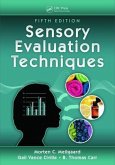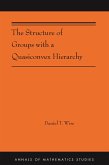This work is concerned with computational aspects of the Selberg trace formalism. In this area, computing the discrete spectrum of the non-Euclidean Laplacian is especially important. Hecke triangle groups represent one of the simplest possible cofinite settings for this type of problem. In addition to considering the usual type of eigenfunction, the author discusses an updated analysis of pseudo cusp forms and their residual effects. The actual computer code, run on a Cray supercomputer, is included in the appendices. Possibilities for further work, both theoretical and computational are examined.
Table of contents:
Eigenvalues of the Laplacian for Hecke triangle groups; (Reprint of) Eigenvalues of the Laplacian for PSL(2,Z); Some new results and computational techniques.
This work is concerned with computational aspects of the Selberg trace formalism. In addition to considering the usual type of eigenfunction, the author discusses an updated analysis of pseudo cusp forms and their residual effects. The actual computer code, run on a Cray supercomputer, is included in the appendices. Possibilities for further work, both theoretical and computational are examined.
Hinweis: Dieser Artikel kann nur an eine deutsche Lieferadresse ausgeliefert werden.
Table of contents:
Eigenvalues of the Laplacian for Hecke triangle groups; (Reprint of) Eigenvalues of the Laplacian for PSL(2,Z); Some new results and computational techniques.
This work is concerned with computational aspects of the Selberg trace formalism. In addition to considering the usual type of eigenfunction, the author discusses an updated analysis of pseudo cusp forms and their residual effects. The actual computer code, run on a Cray supercomputer, is included in the appendices. Possibilities for further work, both theoretical and computational are examined.
Hinweis: Dieser Artikel kann nur an eine deutsche Lieferadresse ausgeliefert werden.







